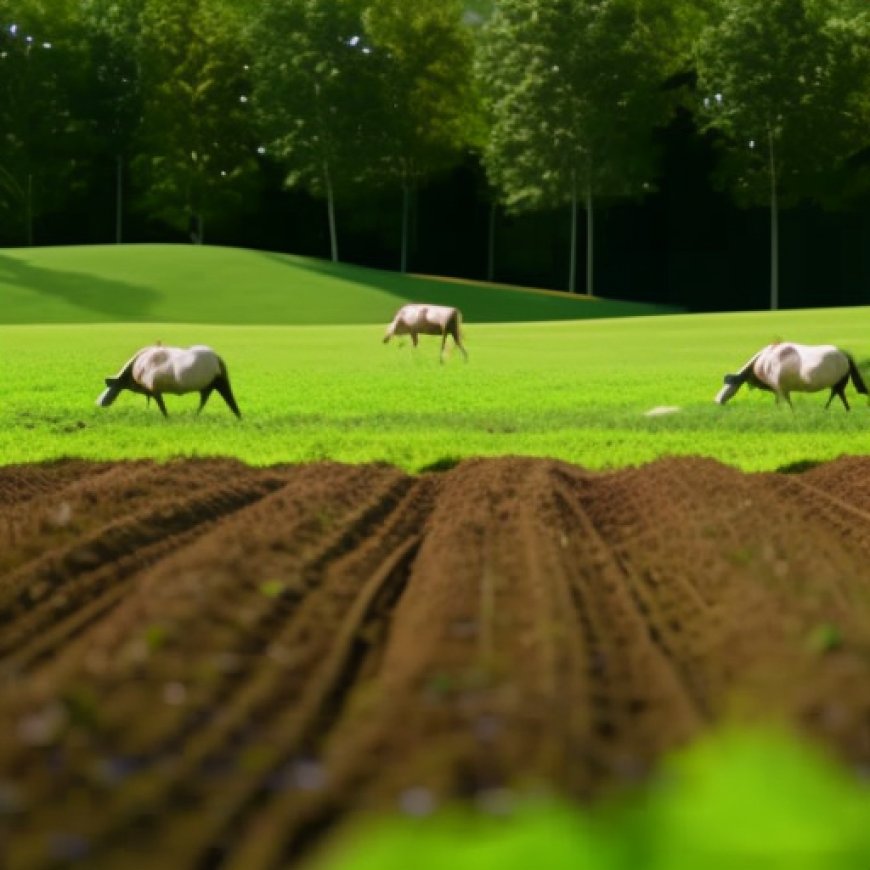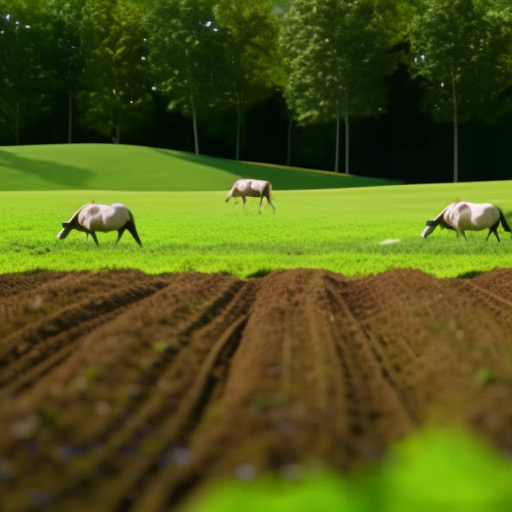Greenfield’s Agricultural Commission springs back to life
Greenfield's Agricultural Commission springs back to life The Recorder


Greenfield’s Agricultural Commission springs back to life
Introduction
More than four years since its dissolution, the Agricultural Commission is back from the dead with three new members. The newly appointed commissioners — Elizabeth Nett, David Johnson, and Denise Leonard — were sworn in at City Hall.
Mission and Objectives
The Agricultural Commission serves as an advisory body to the Mayor’s Office, City Council, and other boards and committees. Its main goals are:
- Promoting and encouraging agriculture
- Educating the public on farming
- Engaging in projects to promote farming practices, protect farmland, and preserve farming culture
Background
The commission stopped meeting in 2019 and disbanded entirely during the COVID-19 pandemic. However, since 2019, the Mayor’s Office has received numerous requests from residents to reestablish the commission.
Elizabeth Nett’s Vision
Elizabeth Nett, a member of the Franklin County Beekeepers Association, realized the need to revive the commission when her neighbor was improperly raising bees on her property line. She plans to host regular educational workshops to inform the public on safe and humane practices in agriculture, beekeeping, and raising animals.
David Johnson’s Goals
David Johnson, a Greenfield native and experienced farmer, aims to approve fair livestock policies for smaller farms in the area. He believes that many of the state’s regulations are too restrictive for lots of land between 1 and 5 acres. Johnson will gather feedback from neighboring towns to draft effective and convenient ordinances.
Denise Leonard’s Role
Denise Leonard, an experienced farmer who spent 50 years raising sheep, joined the commission prior to its collapse. She hopes to use her role on the commission to protect the town’s Right to Farm ordinance and preserve Greenfield’s place as an agricultural community.
Conclusion
The revival of the Agricultural Commission in Greenfield is a significant step towards promoting sustainable agriculture, educating the public, and preserving the town’s farming heritage. With the new commissioners on board, the commission is expected to play a vital role in supporting local farmers and addressing agricultural challenges in the community.
SDGs, Targets, and Indicators Identified in the Article:
| SDGs | Targets | Indicators |
|---|---|---|
| SDG 2: Zero Hunger | Target 2.3: By 2030, double the agricultural productivity and incomes of small-scale food producers, in particular women, indigenous peoples, family farmers, pastoralists and fishers, including through secure and equal access to land, other productive resources and inputs, knowledge, financial services, markets and opportunities for value addition and non-farm employment. | No specific indicators mentioned in the article. |
| SDG 11: Sustainable Cities and Communities | Target 11.3: By 2030, enhance inclusive and sustainable urbanization and capacity for participatory, integrated and sustainable human settlement planning and management in all countries. | No specific indicators mentioned in the article. |
| SDG 12: Responsible Consumption and Production | Target 12.6: Encourage companies, especially large and transnational companies, to adopt sustainable practices and to integrate sustainability information into their reporting cycle. | No specific indicators mentioned in the article. |
| SDG 15: Life on Land | Target 15.9: By 2020, integrate ecosystem and biodiversity values into national and local planning, development processes, poverty reduction strategies and accounts. | No specific indicators mentioned in the article. |
1. Which SDGs are addressed or connected to the issues highlighted in the article?
- SDG 2: Zero Hunger
- SDG 11: Sustainable Cities and Communities
- SDG 12: Responsible Consumption and Production
- SDG 15: Life on Land
2. What specific targets under those SDGs can be identified based on the article’s content?
- Target 2.3: By 2030, double the agricultural productivity and incomes of small-scale food producers, in particular women, indigenous peoples, family farmers, pastoralists and fishers, including through secure and equal access to land, other productive resources and inputs, knowledge, financial services, markets and opportunities for value addition and non-farm employment.
- Target 11.3: By 2030, enhance inclusive and sustainable urbanization and capacity for participatory, integrated and sustainable human settlement planning and management in all countries.
- Target 12.6: Encourage companies, especially large and transnational companies, to adopt sustainable practices and to integrate sustainability information into their reporting cycle.
- Target 15.9: By 2020, integrate ecosystem and biodiversity values into national and local planning, development processes, poverty reduction strategies and accounts.
3. Are there any indicators mentioned or implied in the article that can be used to measure progress towards the identified targets?
No specific indicators are mentioned or implied in the article that can be used to measure progress towards the identified targets.
4. SDGs, Targets, and Indicators Table:
| SDGs | Targets | Indicators |
|---|---|---|
| SDG 2: Zero Hunger | Target 2.3: By 2030, double the agricultural productivity and incomes of small-scale food producers, in particular women, indigenous peoples, family farmers, pastoralists and fishers, including through secure and equal access to land, other productive resources and inputs, knowledge, financial services, markets and opportunities for value addition and non-farm employment. | No specific indicators mentioned in the article. |
| SDG 11: Sustainable Cities and Communities | Target 11.3: By 2030, enhance inclusive and sustainable urbanization and capacity for participatory, integrated and sustainable human settlement planning and management in all countries. | No specific indicators mentioned in the article. |
| SDG 12: Responsible Consumption and Production | Target 12.6: Encourage companies, especially large and transnational companies, to adopt sustainable practices and to integrate sustainability information into their reporting cycle. | No specific indicators mentioned in the article. |
| SDG 15: Life on Land | Target 15.9: By 2020, integrate ecosystem and biodiversity values into national and local planning, development processes, poverty reduction strategies and accounts. | No specific indicators mentioned in the article. |
Behold! This splendid article springs forth from the wellspring of knowledge, shaped by a wondrous proprietary AI technology that delved into a vast ocean of data, illuminating the path towards the Sustainable Development Goals. Remember that all rights are reserved by SDG Investors LLC, empowering us to champion progress together.
Source: recorder.com

Join us, as fellow seekers of change, on a transformative journey at https://sdgtalks.ai/welcome, where you can become a member and actively contribute to shaping a brighter future.







